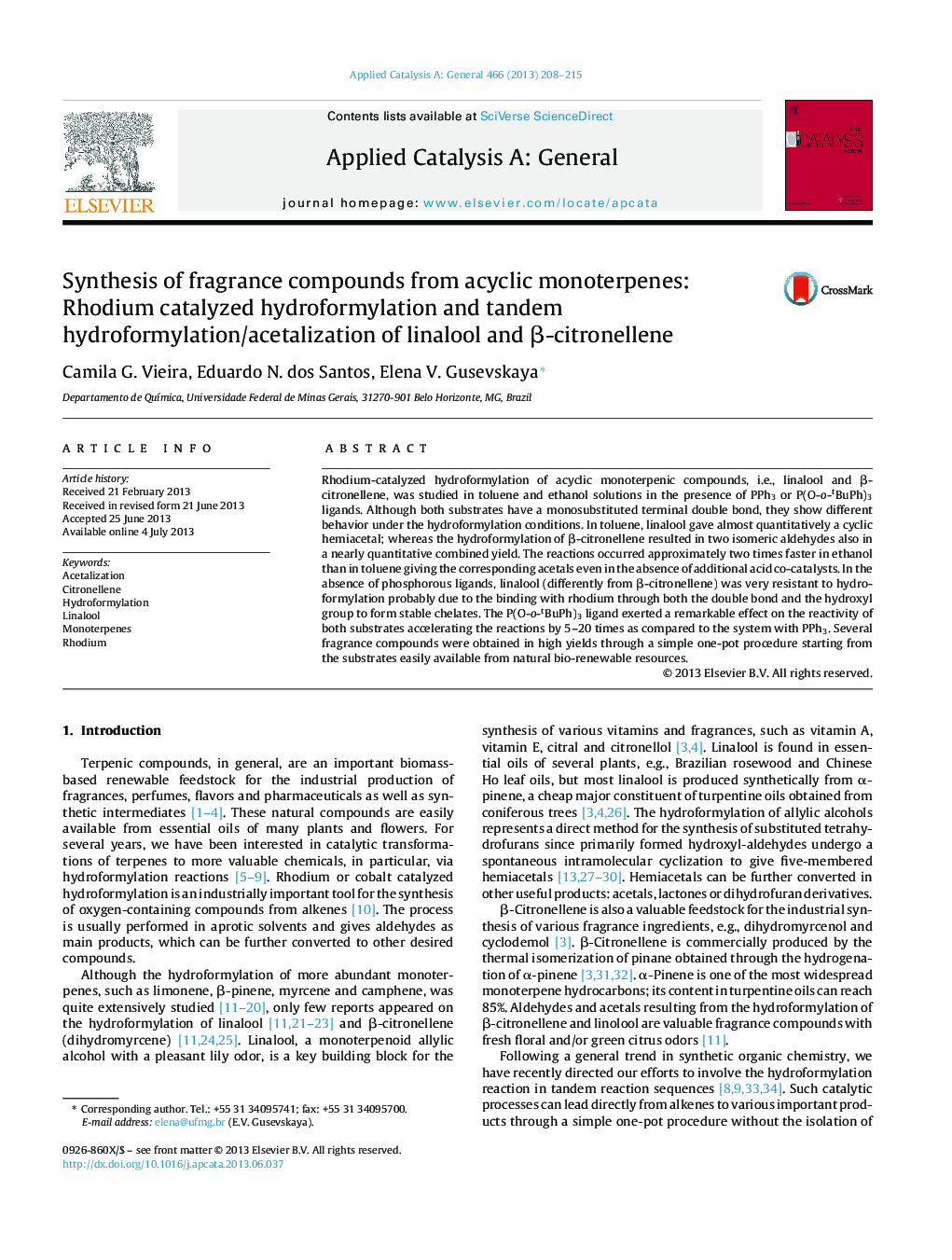| کد مقاله | کد نشریه | سال انتشار | مقاله انگلیسی | نسخه تمام متن |
|---|---|---|---|---|
| 40309 | 45849 | 2013 | 8 صفحه PDF | دانلود رایگان |

• Hydroformylation occurs approximately two times faster in ethanol than in toluene.
• The hydroformylation of linalool and β-citronellene in ethanol gave acetals directly.
• The acetalization occurs under mild conditions in the absence of acid co-catalysts.
• The reactions are up to twenty times faster with P(O-o-tBuPh)3 as compared to PPh3.
• Several fragrance compounds were obtained starting from bio-renewable substrates.
Rhodium-catalyzed hydroformylation of acyclic monoterpenic compounds, i.e., linalool and β-citronellene, was studied in toluene and ethanol solutions in the presence of PPh3 or P(O-o-tBuPh)3 ligands. Although both substrates have a monosubstituted terminal double bond, they show different behavior under the hydroformylation conditions. In toluene, linalool gave almost quantitatively a cyclic hemiacetal; whereas the hydroformylation of β-citronellene resulted in two isomeric aldehydes also in a nearly quantitative combined yield. The reactions occurred approximately two times faster in ethanol than in toluene giving the corresponding acetals even in the absence of additional acid co-catalysts. In the absence of phosphorous ligands, linalool (differently from β-citronellene) was very resistant to hydroformylation probably due to the binding with rhodium through both the double bond and the hydroxyl group to form stable chelates. The P(O-o-tBuPh)3 ligand exerted a remarkable effect on the reactivity of both substrates accelerating the reactions by 5–20 times as compared to the system with PPh3. Several fragrance compounds were obtained in high yields through a simple one-pot procedure starting from the substrates easily available from natural bio-renewable resources.
Figure optionsDownload high-quality image (69 K)Download as PowerPoint slide
Journal: Applied Catalysis A: General - Volume 466, 10 September 2013, Pages 208–215